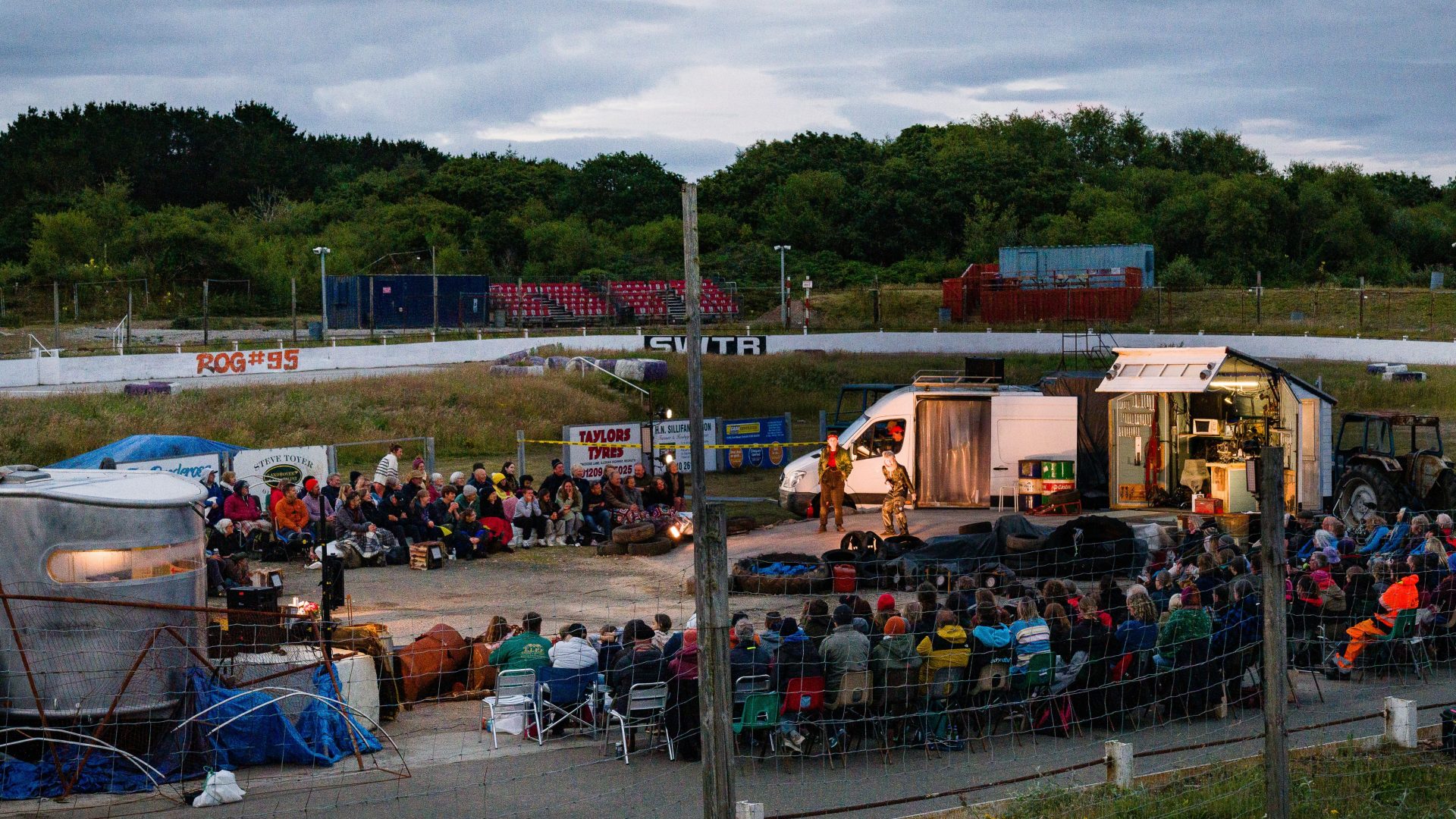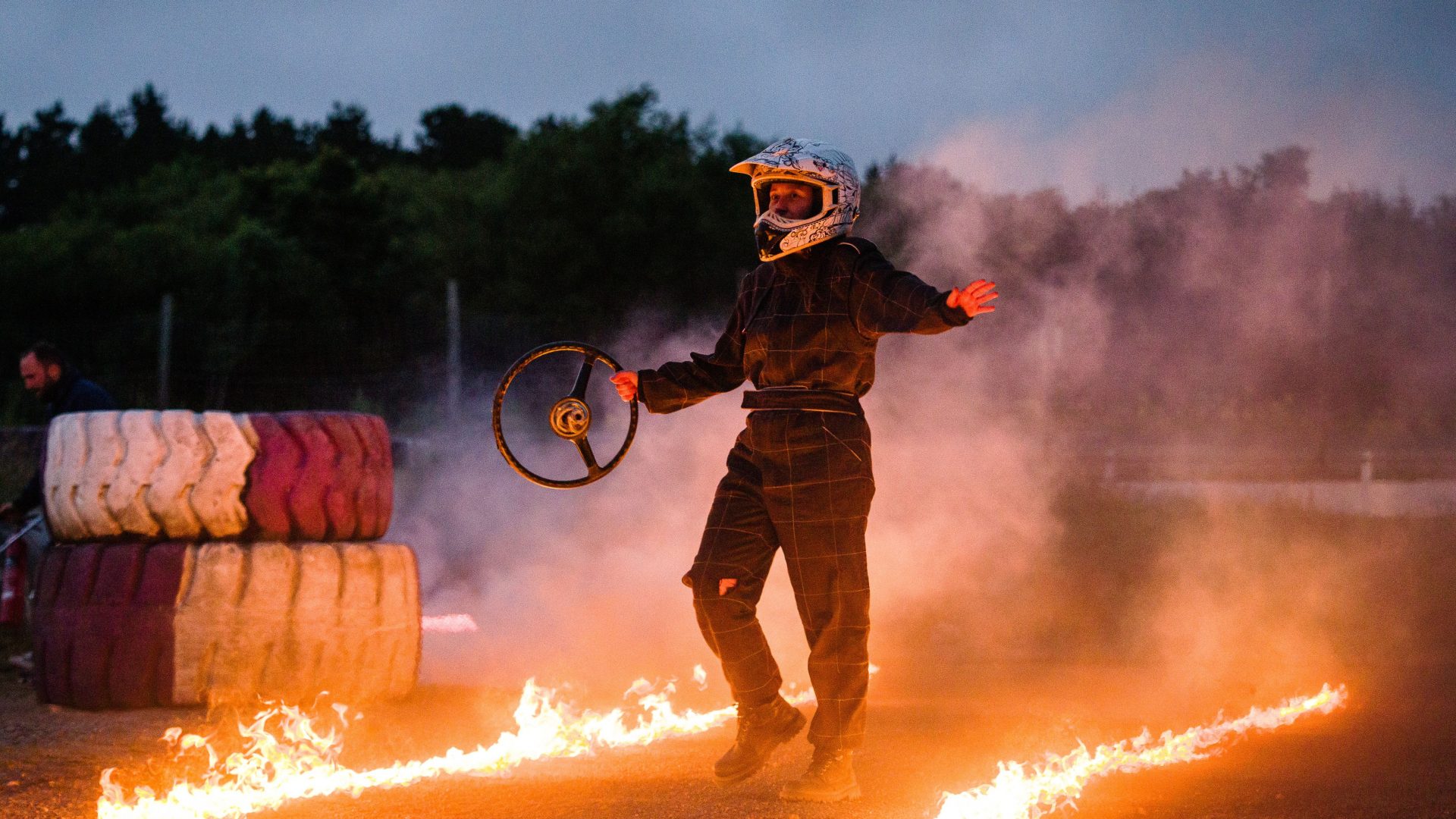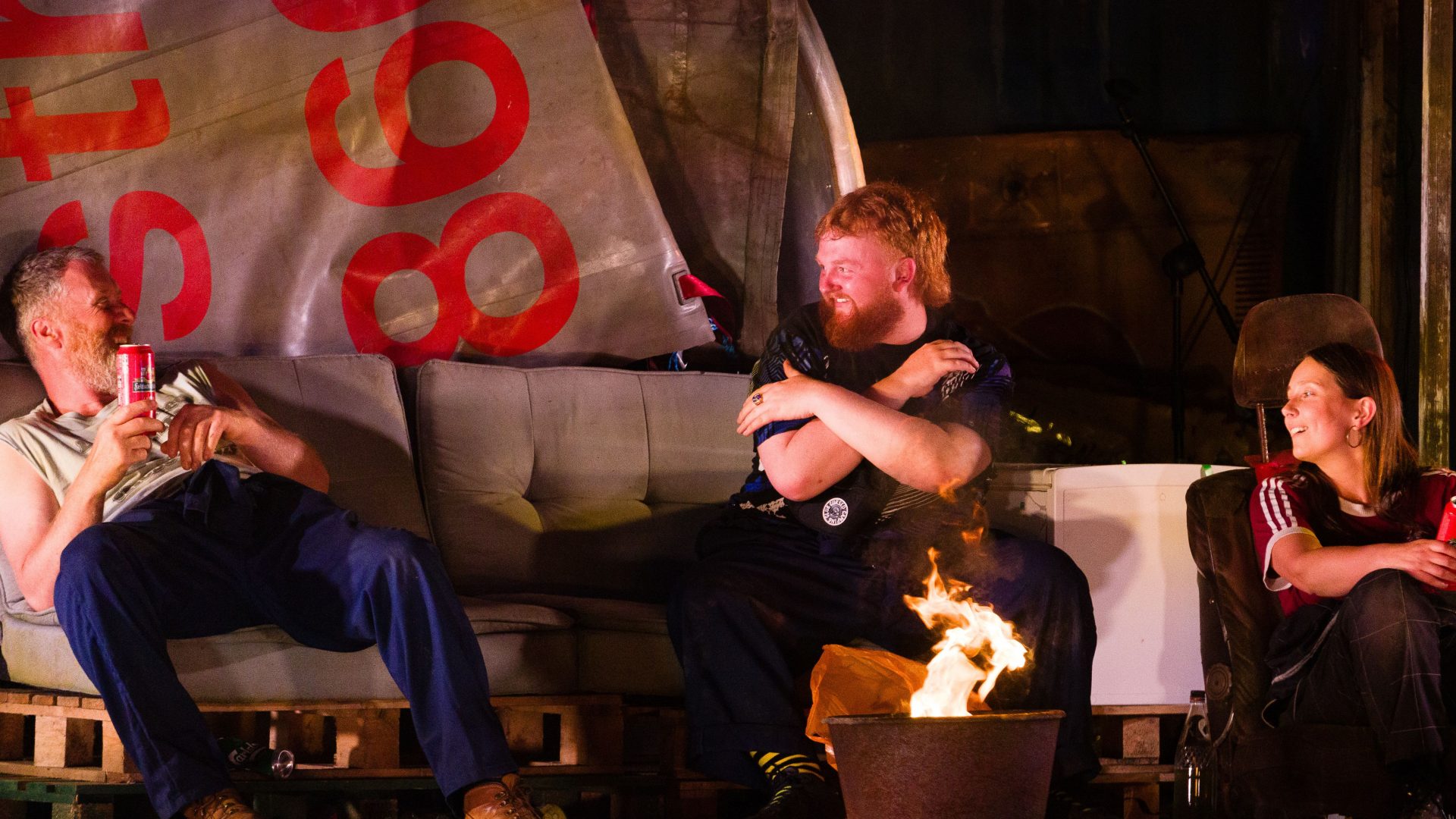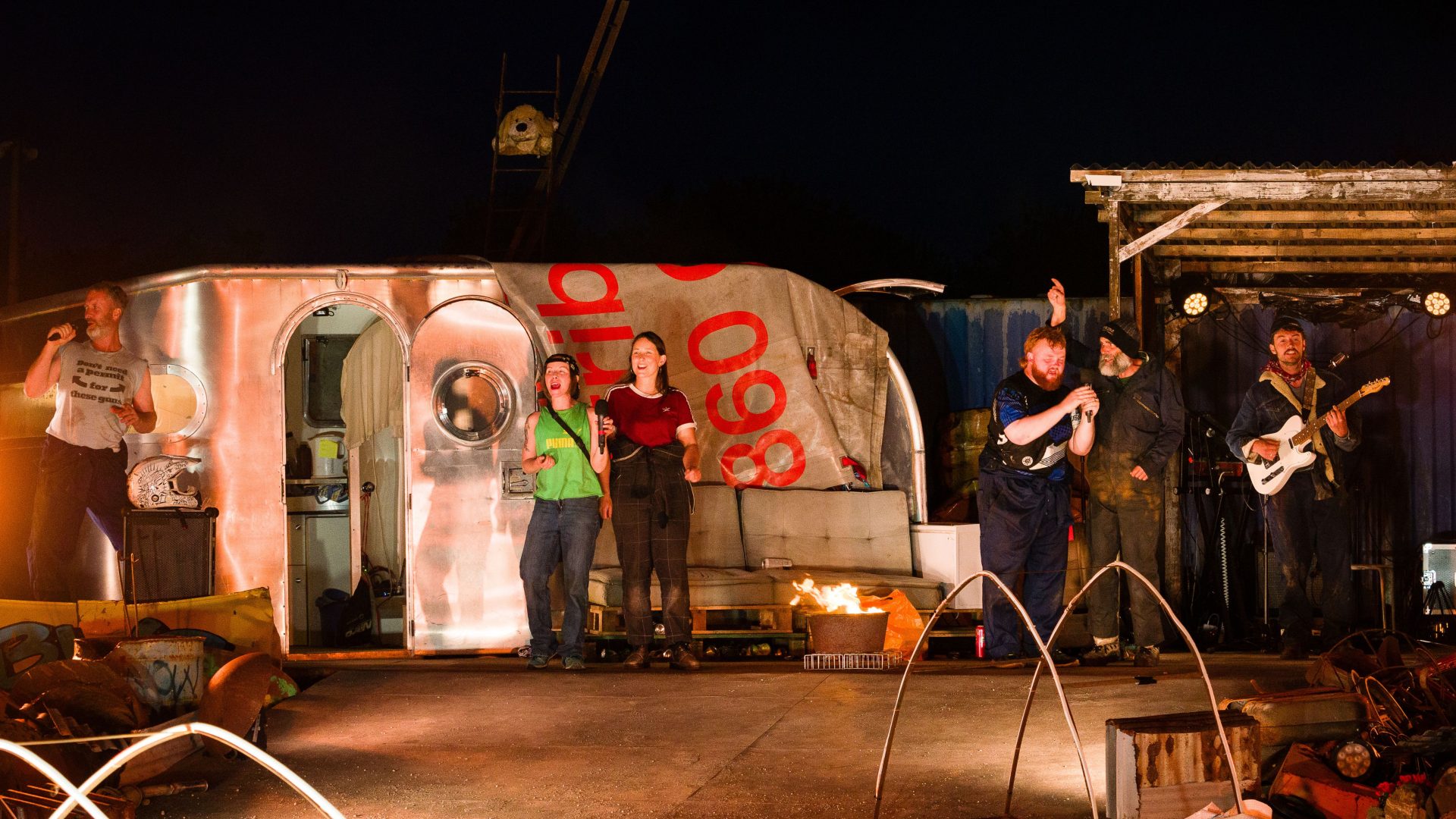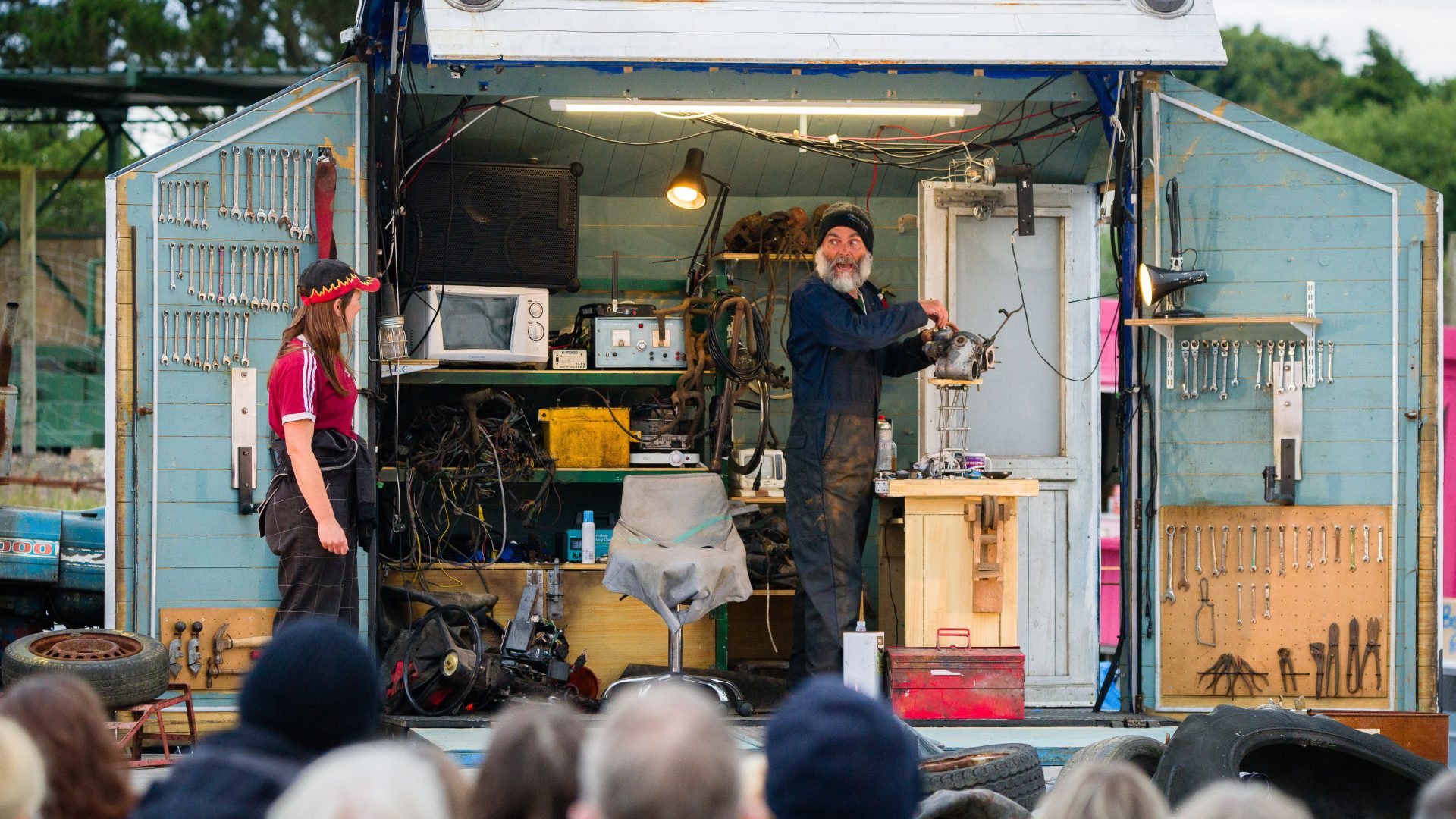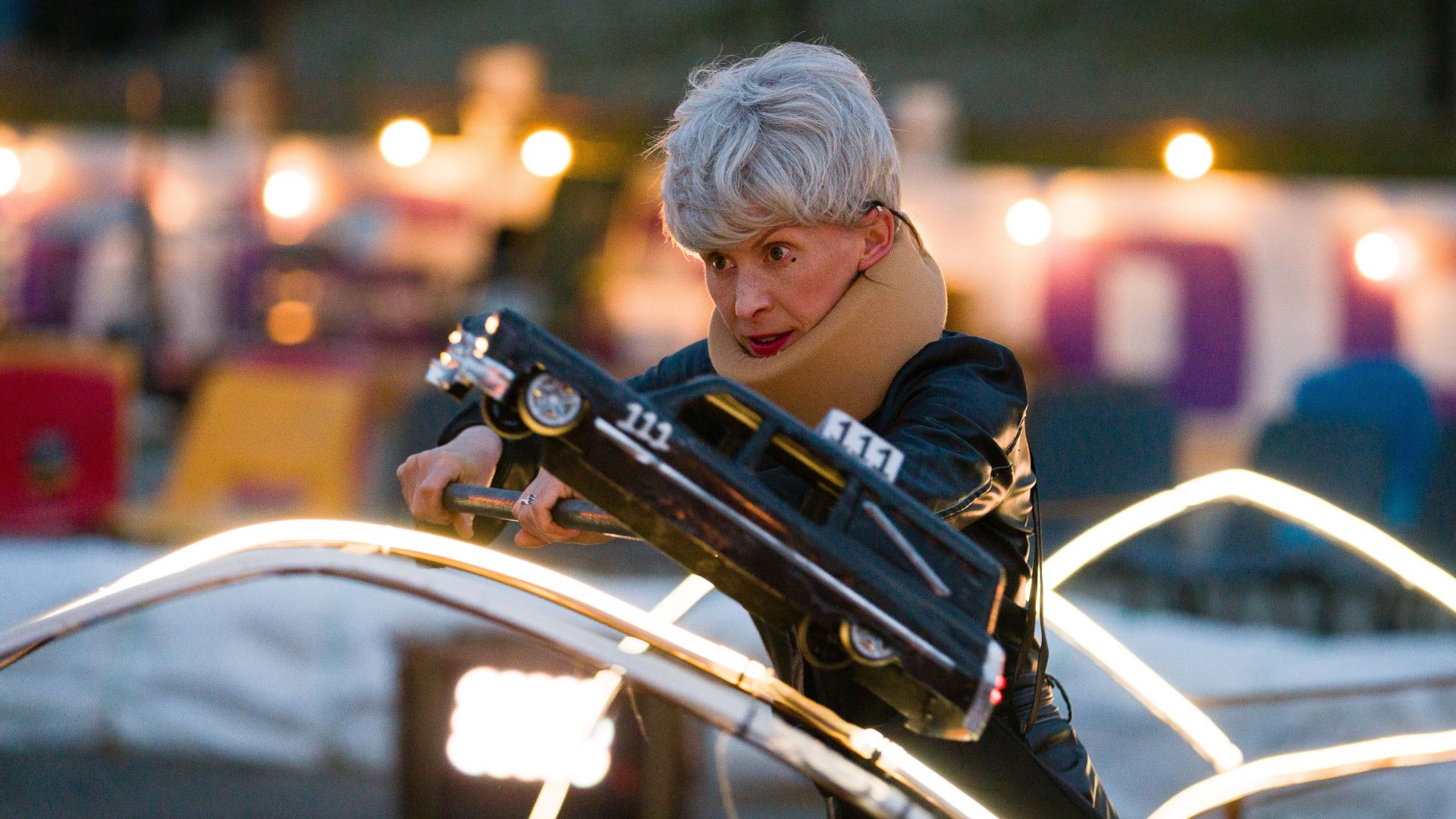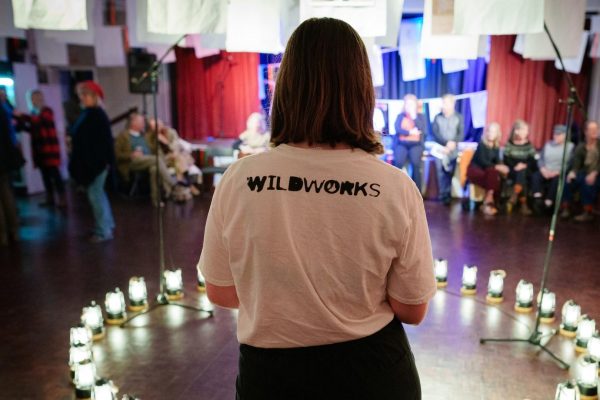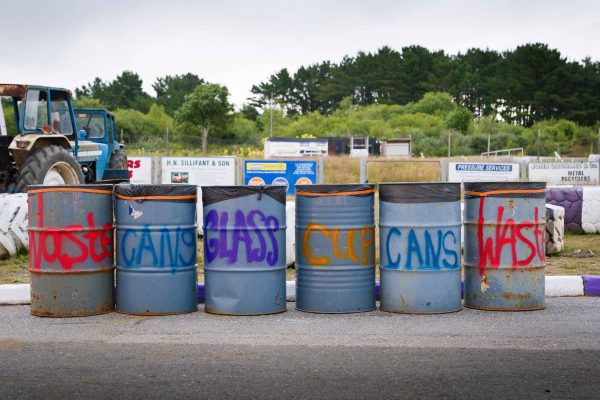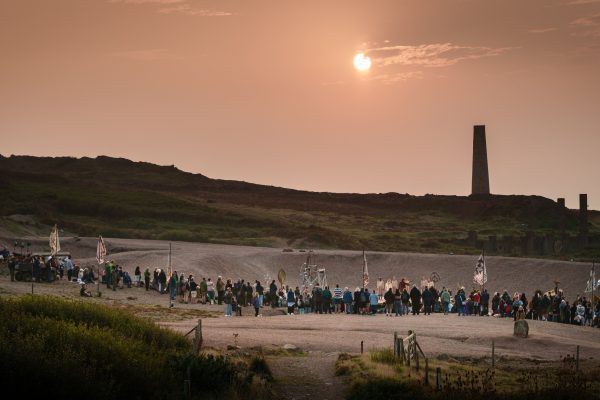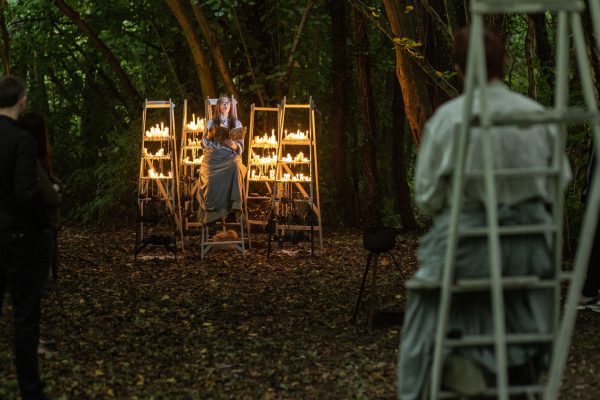Written by Associate Artist Amy Pitt.
Designing Kneebone began with a question; how do we create a smaller-scale Wildworks show that is portable, yet still deeply rooted in place, community, and site?
The script The Kneebone Cadillac by Carl Grose had already been written based on and around the United Downs Raceway, so it felt natural to explore performing it there. We imagine it as the first stop in a potential series, staged in raceways or similar rugged, liminal landscapes across the country.
The story unfolds between Monroe’s Garage and Kneebone’s Scrap Yard, to me two distinct worlds that sit like islands, separated by a transient central space where characters pass through and scenes shift. This was the first step in creating the set, two islands with a shape-shifting central space. This evolved into two ramped islands facing each other, like a half-pipe, charged with the energy of potential motion, as if at any moment vehicles could roar across the divide, launching from one world to the next.
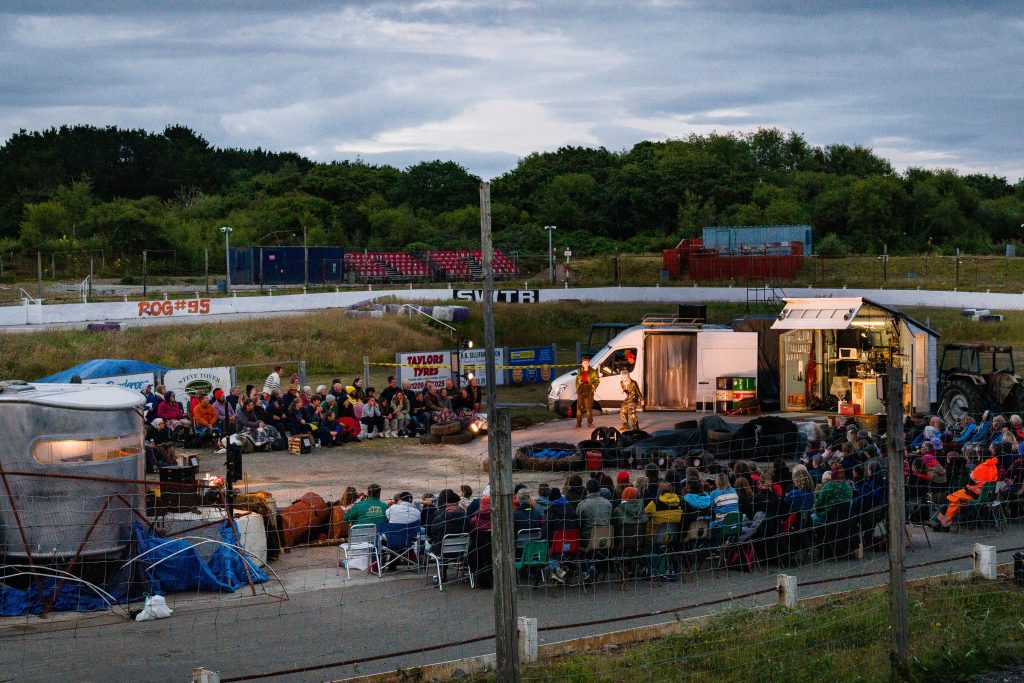
From the start, I envisioned a fully mobile set: trucks, wheeled units, quick to assemble. The visual language drew directly from the world of banger racing and what was already creating the landscape of the site; vans, containers, painted cars, and piles of salvaged parts.
The world we were creating needed stuff. Adhering to the Theatre Green Book (an initiative to make theatre more sustainable), nearly all the set was made up of stuff that already existed; Wildworks Vehicles and trailers, materials from the store, hired steel deck, found or borrowed items from the raceway itself or its community. Banger racer David “Bam Bam” Spooner welcomed us into his incredible “garage” although calling it a garage doesn’t do it justice. It’s a whole world of old cars and two barn-like structures stacked to the rafters with banger racing treasures, a trove of smashed parts and vividly painted panels. We left with a van full of items, each piece carrying its own history and character.
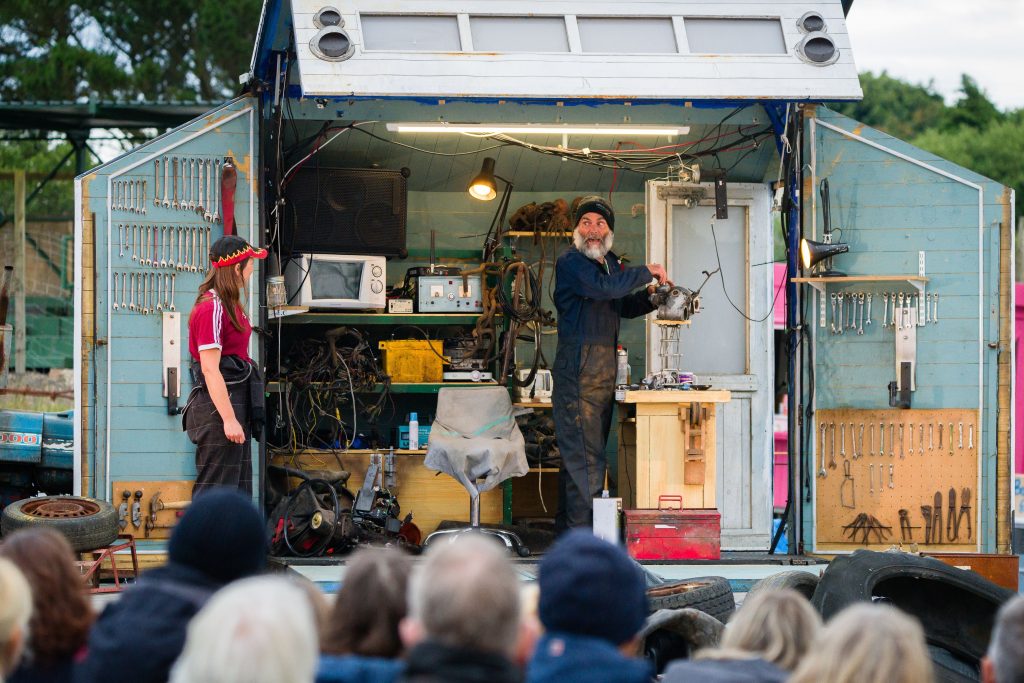
Shaping the show into a single-location experience, where the audience remains grounded, was a very different approach to the usual Wildworks process to make everything full-scale, and filmic over multiple locations. The way we told the story and worked with the site had to be reimagined, leaning towards some more conceptual choices to play with scale:
The raceway scene grew out of the idea of Maddy’s emotions unfolding like a rollercoaster, rising, plunging, twisting, mirroring her inner monologue, played out with model cars and light up sculptural ‘scrap’ which became the roller coaster raceway. The Caddy is another example; the car at the centre of so many family discussions, became a question mark. What if it didn’t exist at all? You never actually see it as the shape of a Cadillac is hidden under a large tarpaulin. We wanted to keep it ambiguous, feeding into the fabric of half-truths the family spins for themselves and the audience.
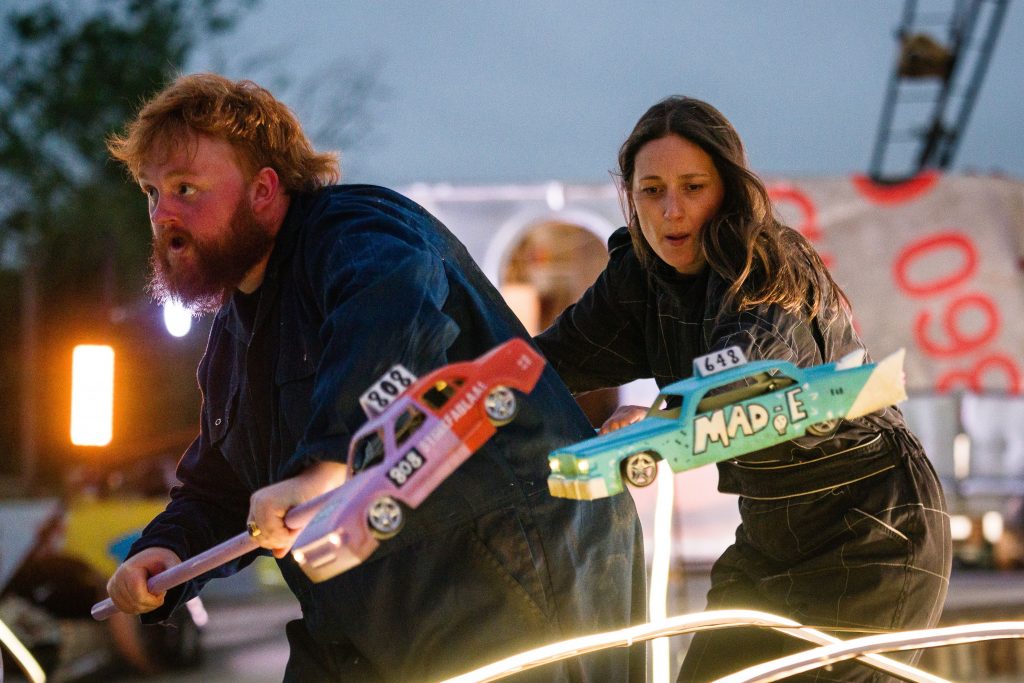
The use of fire and bringing in characters from the outer reaches of the Kneebone world we created, were drawing on a Wildworks process which formed elemental and filmic sections. We did this without relying heavily on specific parts of the location, meaning this could be transferable if remade on a different site.
The collaboration with the raceway was seamless. Crispen, the raceway promoter, was enthusiastic and endlessly helpful, from sourcing old lorry curtains to moving containers. He could help with it all. Whenever I found something interesting lying on the floor and asked if I could use it, the answer was always yes!
Most of all, the raceway community embraced the project wholeheartedly, sharing their stories, equipment, and space. That openness shaped Kneebone as much as the set or script. In the end, it’s always about the people, their generosity and spirit breathed life into the work.
